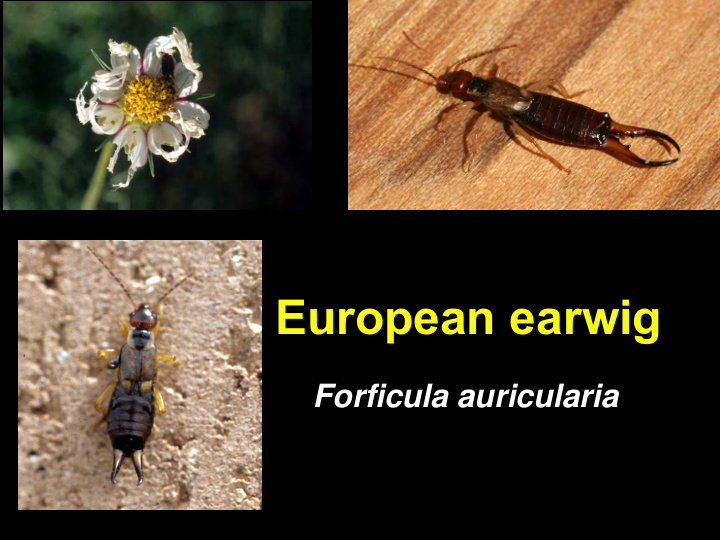



European earwig Forficula auricularia
Filament antennae, Prominent cerci chewing mouthparts (“pincers”) Short wing covers (elytra)
Earwig unfolding wings. Despite the presence of a large hind wing, this species does not fly.
The cerci (aka ‘forceps’), are fairly weakly muscled. They are used during mating (by males) and can help to manipulate prey.
European earwig - male European earwig - female
Female Male Photograph courtesy of Jim Kalisch, University of Nebraska
Earwigs have simple metamorphosis Newly hatched Mass of eggs nymphs Mother tending eggs and young
Mother earwig with 2nd instar nymphs
Earwigs are omnivores Small soft-bodied insects and insect eggs make up an important part of their diet.
Earwigs feed at night
Flower petals and soft plant parts are also eaten by earwigs. Earwigs feed at night.
Thigmotaxis – “a predilection for pressure”
Earwig in nectarine
Earwigs – Increasing as garden problems?
Mulches and Nuisance Invaders • European earwig • Sowbugs/Pillbugs • Springtails • Field crickets • Millipedes • Some spiders
Recommendations for insecticides are included in Extension Fact Sheets
Basic Earwig Trap Design for Bait Tests
Baiting Evaluations – Rolled corrugated cardboard or crumpled newspaper can be used in trap design – Addition of either wheat bran or wheat germ greatly increase capture of earwigs in traps – Vegetable oil in a sunken cup is highly effective for earwig capture
Canola oil in a small cup
One night’s capture!
Recommend
More recommend